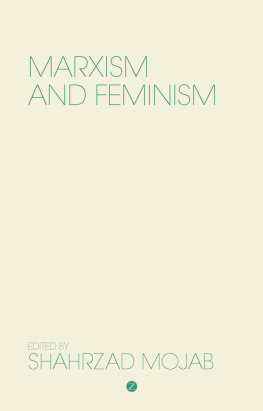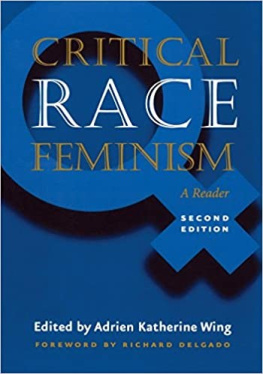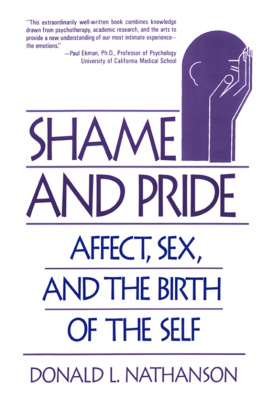LEGALIZING MISANDRY
Legalizing Misandry
From Public Shame to Systemic Discrimination against Men
PAUL NATHANSON and
KATHERINE K. YOUNG

McGill-Queens University Press 2006
ISBN -13: 978-0-7735-2862-8 ISBN -10: 0-7735-2862-8
Legal deposit first quarter 2006
Bibliothque nationale du Qubec
Printed in Canada on acid-free paper
This book has been published with the help of a grant from the Canadian Federation for the Humanities and Social Sciences, through the Aid to Scholarly Publications Programme, using funds provided by the Social Sciences and Humanities Research Council of Canada.
McGill-Queens University Press acknowledges the support of the Canada Council for the Arts for our publishing program. We also acknowledge the financial support of the Government of Canada through the Book Publishing Industry Development Program ( BPIDP ) for our publishing activities.
Library and Archives Canada Cataloguing in Publication
Nathanson, Paul, 1947
Legalizing misandry : from public shame to systematic discrimination
against men / Paul Nathanson and Katherine K. Young.
Includes index.
ISBN -13: 978-0-7735-2862-8 ISBN -10: 0-7735-2862-8
1. Misandry Canada. 2. Misandry United States. 3. Sex discrimination against men Canada. 4. Sex discrimination against men United States. I. Young, Katherine K., 1944 II. Title.
HQ1090.N367 2006 305.320971 C20059024836
Typeset in 10/12 Sabon with Frutiger display by True to Type
Contents
Acknowledgments
We would like to thank the many people who helped make this book possible. Some responded to our requests for legal and statistical information: Augustina J. Kposowa, Grant Brown, and Brian Jenkins. Christopher Gray read several chapters and offered his comments. Jane Aiken has granted us permission to publish some of her material. Nicolas Lambe and Tara McPhail helped us with our legal citations. Our editor, Ron Curtis, read the manuscript very carefully; he not only corrected typos but also provided many worthwhile editorial suggestions. Finally we are grateful to the Social Sciences and Humanities Research Council for its financial support.
Introduction
One sure sign of danger at any time and in any place is a segment of the population that society considers unworthy of attention. No wonder more boys than girls face the future with apathy and drop out of school. Males are not faring well at all in a society that is now focused explicitly on the needs and problems of females and is often hostile to the very possibility that males might have any distinct needs and problems of their own. Rapid social change and depression have been listed as causes of these problems, but the question is why these factors affect men, especially young men, much more than they do women.
These are complex problems, to be sure, and have more than one explanation (as we will show in Transcending Misandry, the third volume of this trilogy; the first volume, Spreading Misandry, was published in 2001). Underlying many explanations, though, is a distinctly gynocentric world-view. Being woman-centred, by definition, gynocentrism ignores the needs and problems of men. (The irony is that it was originally adopted to correct the biases of an androcentric, or man-centred, worldview.) And because gynocentrism now has both official status (in law) and quasi-official status (in institutional policies), its bias has become deeply embedded in public policy. That status has created and even institutionalized a new double standard, one that favours women instead of men and that, in turn, has created many additional problems: psychological, political, and above all moral ones. It is hard to know precisely how these problems affect boys and men personally, but it is worth noting that no large-scale study has ever been done to find out. It would be folly to ignore the warning signs mentioned above, in our opinion, but that is precisely what has been happening.
At least one bar association has seen fit to threaten male dissenters, concluding a report on women with a stern warning. Men, it says, will try to From our point of view, this report one that relies on its own stereotypes has gone beyond gynocentrism and embraced misandry.
Gynocentrism is the self-centred counterpart of androcentrism, and misandry is the sexist counterpart of misogyny. From the very beginning of this volume, we must be as clear as we were in the earlier volume about one thing. We define hatred as a collectively shared and culturally propagated worldview, not a personal emotion such as dislike or anger. Ultimately, this worldview is always expressed as our contempt for them. Misandry, as such, has never been either legal or illegal. In a technical sense, therefore, it cannot be legalized in the same way that, say, marijuana can be legalized. Nonetheless, overt expressions of hatred toward specific groups are indeed illegal. Our point here is that hatred toward men is just as unacceptable morally as hatred toward any other group and should therefore be just as unacceptable legally.
Some people are aware of misandry but fervently believe that hatred toward men should be regarded as a legitimate exception to the general rule against hatred toward other groups. Most people find it hard even to notice misandry. The very idea seems counterintuitive. Men, according to conventional wisdom, have all the power. Therefore, presumably, they are immune to all serious harm. Besides, no one has ever called explicitly for discrimination against men or against any other segment of the population. After all, modern democracies and their legal systems are based explicitly on the rhetoric of equality. Yet many people have called explicitly for discrimination in favour of women that is, legal measures to solve problems faced only by women. As a result, women have gained special protections: for example, the right to job security and benefits during pregnancy. These reforms, which were originally welcomed in the name of fairness, were soon extended to include measures such as affirmative action. Designed to level the playing field, these measures were supposed ultimately to create equality by institutionalizing temporary inequality (although it was by no means self-evident that they could ever be terminated, no matter how much conditions might change, without a major political upheaval).
The goal was to raise the prospects of women, advocates explained, not to lower those of men. The result, nonetheless, was that gynocentrism and even misandry entered through the back door. Feminists explained the need for these legal measures by blaming the problems of women directly and exclusively on men, who were the scapegoats. Women were a victim class, said feminist lobby groups, and men the oppressor class. If men suffered from the new discrimination, they added, then so be it; men were collectively guilty and deserved collective punishment. No wonder many people, including some men, accepted the notion that it was morally acceptable to impose legal obligations, penalties, and restrictive conditions on men but not on women. No wonder, also, that they found it morally acceptable to use hate legislation as a way of protecting women and minorities from negative stereotypes but not to as a way of protecting men from equally negative stereotypes.
By now, our legal systems are based firmly on double standards. No matter how liberal, no matter how complacent, men who end up in court over conflicts with women soon discover these double standards not only in connection with custody and child support but also in connection with accusations of domestic violence and even in the reversal of such basic legal principles as the presumption that they are innocent unless proven guilty. Discrimination against men is by now so pervasively institutionalized that it is best described as systemic and characteristic of the legal system as a whole. Here, then, is the connection between the attitudes generated by misandry in popular culture and their institutionalization in policy and law.
Next page






